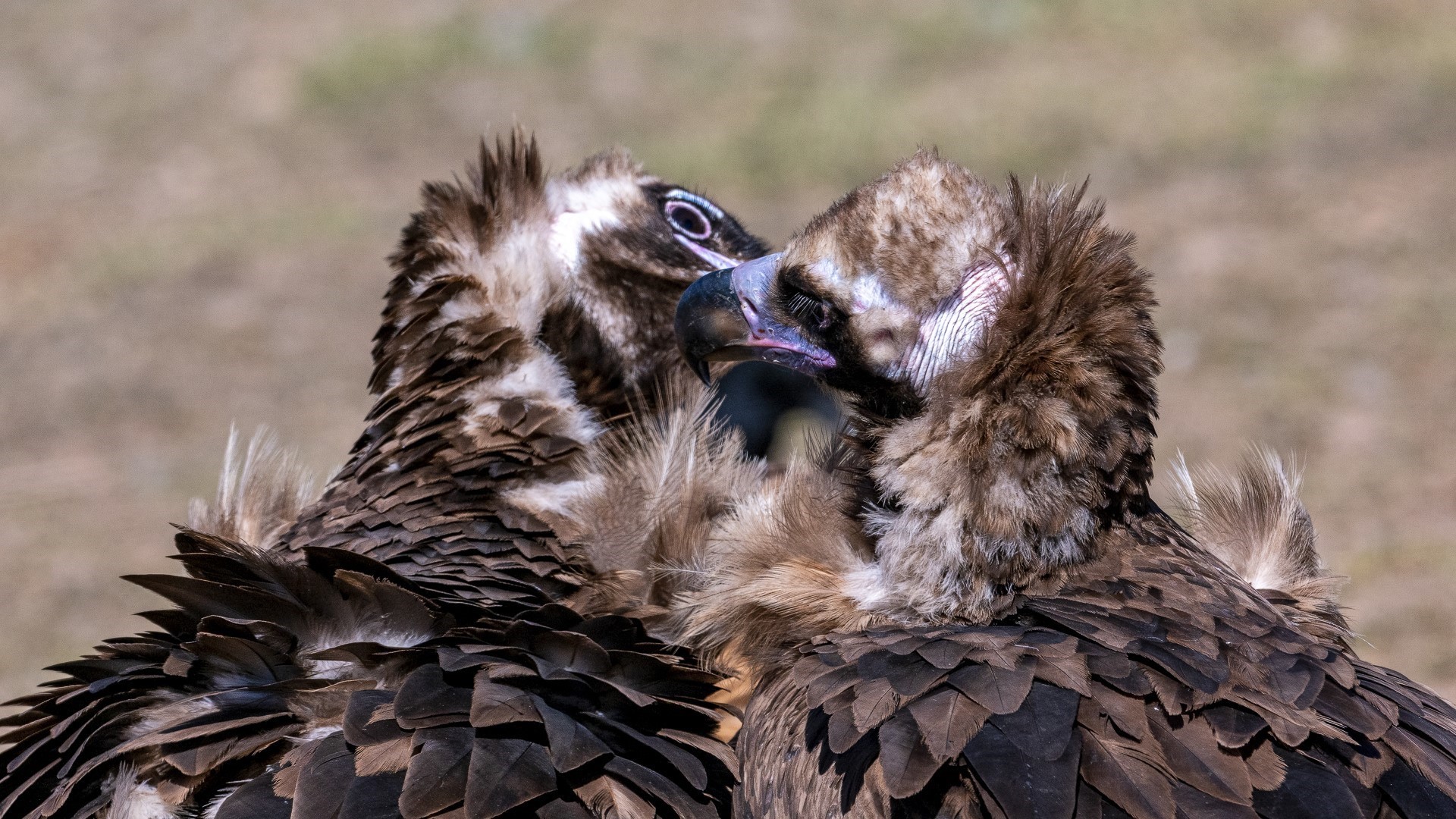The Cinereous Vulture
Key facts and figures
- Homepage
- Pages
- LIFE Aegypius Return
- The Cinereous Vulture
- Key facts and figures
Key facts and figures
The Cinereous Vulture (Aegypius monachus), also called the Eurasian Black Vulture, is a true giant of the skies. Renowned for its impressive size, it holds the title for the largest Old World vulture and one of the biggest and heaviest birds of prey globally, with an astonishing wingspan stretching 3 meters. It’s a true wonder of nature!

Status Worldwide
Near Threatened (population decreasing)

Status in Portugal
Endangered

Status in Spain
Vulnerable
Scientific Name
Aegypius monachus
Weight
7.5 – 12.5 kg
Length
100 – 110 cm
Wingspan
2.5 – 2.95 m
Diet
Animal carcasses (medium-sized or large mammal carcasses such as rabbits, wild and domestic herbivores)
Habitats
Forested areas in hills and mountains
Lifespan
A long-lived bird, living for approximately 20 years in the wild and up to 35 in captivity
Breeding behaviour
Forms monogamous pairings, reaches sexual maturity at 5-6 years old and lays only one egg per breeding season
Features and appearance
With its broad wings and wedge-shaped tail, this majestic bird boasts an impressive wingspan of 2.5-2.95 metres and can measure up to 110 cm in length. To top it off, the Cinereous Vulture is one of the heaviest flying birds in the world, weighing 6.3-11.5 kg. But what truly sets this avian wonder apart is its distinctive appearance - a dark brown plumage with a bluish-grey bald head and neck decorated with a fluffy collar that becomes lighter with age. Interestingly, in many cultures it's even known as the 'monk vulture' due to the upright feathers on its neck resembling a monk's hood.
Distribution and habitat
Behaviour and diet

Breeding behaviour
Cinereous Vultures are known for their monogamous and lifelong pair bonds, with both males and females working together to raise their young. Individuals take quite a long time to reach sexual maturity (5 to 6 years), and their breeding season is quite lengthy, lasting around nine months. Typically, pairs use sticks and twigs to build huge nests on treetops that can be as wide as 3 m and 2 m deep. These nests are reused year after year and can become quite large and elaborate over time. Females lay only one egg per breeding season. It takes approximately 50 to 55 days for the egg to hatch, and once it does, the chick is covered in grayish down that gradually lightens to white before the feathers start to grow in. Flight feathers begin growing when the nestling is around 30 days old and cover the plumage completely by 60 days of age. The parents feed their young by regurgitation, and around 120 days old, the nestling is ready to fledge. This is a critical period, as the young birds are vulnerable to predators and accidents during their first flights. Once they have successfully fledged, the young vultures will continue to receive food and protection from their parents for around two more months before they become fully independent.











